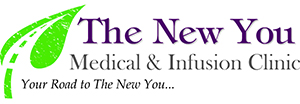Heel Spur Treatment in Irving, TX

Heel spurs are calcium growths that protrude from the back or bottom of your heel. They can occur alone or be related to other podiatric conditions. Many times, heel spurs develop as the body tries to repair itself from injury by creating additional bone at the site of the trauma. The two most commonly associated conditions with heel spurs are Achilles tendonitis and plantar fasciitis.
A heel spur located at the back of your heel is generally associated with Achilles tendinitis . Achilles tendinitis is inflammation to the band of tissue that connects the calf muscle to your heel bone. A heel spur located on the bottom of your heel is generally associated with plantar fasciitis . Planta fasciitis is inflammation of the muscles, ligaments, and a rubber band-like portion of tissue that stretches from the underside of your foot's sole to your heel.
In 90 percent of all cases, heel spurs are easily treated by your healthcare professional.
Heel Spur Symptoms and Causes
A heel spur is not necessarily painful. In fact, only about half of the people who have heel spurs actually experience any pain. But those who do experience pain are most often athletes whose primary sport includes a great deal of running and jumping and therefore puts added pressure onto the muscles and ligaments in the feet.
On the occasions when people are suffering from pain, it's not necessarily a constant pain. Heel spur pain is frequently described as feeling like a knife or pin sticking you in the bottom of your foot when you first stand up in the morning, while the pain might lessen to a dull ache later in the day.
A few common causes for heel spurs are:
- Running, jogging or jumping on a hard surface
- An abnormal walking gait that places pressure on your heel bone, ligaments and nerves close to your heel
- Being overweight
- Wearing high heels
- The aging process
- Diabetes
- Spending most of the day on your feet on a regular basis
Heel Spur Diagnosis and Treatment
Most of the time, heel spurs do not require surgery. Your healthcare provider will most likely want to perform a physical exam of your feet and have an x-ray of your foot taken to check for calcium growths. Your healthcare provider will likely recommend at-home care to correct a heel spur. Frequently recommended at-home remedies include:
- Replacing your shoes, or for women, refraining from wearing high heels
- Using inserts or orthotic products in your shoes
- Wrapping muscles and tendons that are stressed for support
- Stretching exercises
- Physical therapy
- Over-the-counter medications like acetaminophen and ibuprofen
If at-home remedies do not bring you relief, your healthcare provider may recommend corticosteroid injections to calm localized inflammation. In rare cases, surgery may be recommended to relieve the pain and discomfort brought on by a heel spur or to remove the spur all-together.
Request more information about heel spurs today. Call (817) 203-2760 or contact The New You Medical & Infusion Clinic online.
The New You Medical & Infusion Clinic
Address
100 Grapevine HwyHurst, TX 76054
(817) 203-2760
https://www.newyoumedclinic.com/
Hours
Mon:
10:00 am - 6:00 pm
Tue:
10:00 am - 6:00 pm
Wed:
10:00 am - 6:00 pm
Thu:
10:00 am - 6:00 pm
Fri:
Closed
Sat:
Closed
Sun:
Closed

